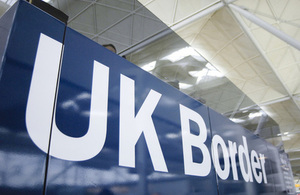Report find significant improvements in management of asylum casework, but some areas need attention
The Independent Chief Inspector of Borders and Immigration yesterday published an inspection report on the Home Office's asylum casework.
 Image credit: UK GovernmentYou can read the 52-page report here. The Home Office's response to the report is here.
Image credit: UK GovernmentYou can read the 52-page report here. The Home Office's response to the report is here.
The inspection was conducted between March and July of 2015 and considered the efficiency and effectiveness of the Home Office's asylum casework operations and the quality of decision-making by examining:
- the registration, screening and routing process;
- how substantive asylum interviews were conducted and whether material facts were captured and probed;
- whether decision-making was in accordance with Home Office guidance.
The Chief Inspector states in the report: "The inspection found that the Home Office had made significant improvements in the efficiency and effectiveness of its management of asylum casework during 2014/15. It had met its aim of deciding all straightforward claims made on or after 1 April 2014 within six months, while successfully clearing all straightforward claims lodged before 1 April 2014 by 31 March 2015. The inspection also found that non-straightforward cases were being monitored effectively and decided quickly once barriers had been removed."
As the Chief Inspector notes, asylum claims increased sharply after the period of the inspection, with a 50% rise between August 2014 and August 2015. The Chief Inspector said that his inspection showed "a solid base from which to respond to the challenge of the rising asylum intake in 2015/16."
However, the report found that the quality of interviewing and decision-making needed to improve, along with the recording of the reasons for decisions. The report states: "The inspection identified a number of areas for improvement, including aspects of the screening process, which the Home Office's own internal quality assurance processes had also identified. The inspection found that management of further leave applications from unaccompanied asylum-seeking children could be improved to reduce delays and to maintain contact with the claimant. However, the most serious failings concerned the way in which allegations of torture were managed. Neither the Immigration Rule 35 process nor the Medico-Legal Report process was working as intended."
The report makes nine recommendations for improvement. The Home Office said in its response that it accepts, or partially accepts, all nine of the Chief Inspector's recommendations.
The Refugee Council covered the report here, with Policy Manager Judith Dennis saying: "It's extremely welcome that inspectors have investigated the way the Home Office deals with asylum claims. Considering decisions on asylum claims can be life or death, so it's vital the Home Office follows its own procedures properly and gets them right. It is particularly worrying that the internal processes that should be helping the Home Office improve do not appear to have had the desired effect. Action must be taken to change this as a matter of urgency."
The Guardian highlighted how the report found "serious failings" in the handling of claims by torture victims, with delays of more than two years before their cases are resolved due to the Home Office's unwillingness to accept evidence supporting their claims from bodies other than Freedom from Torture and the Helen Bamber Foundation.